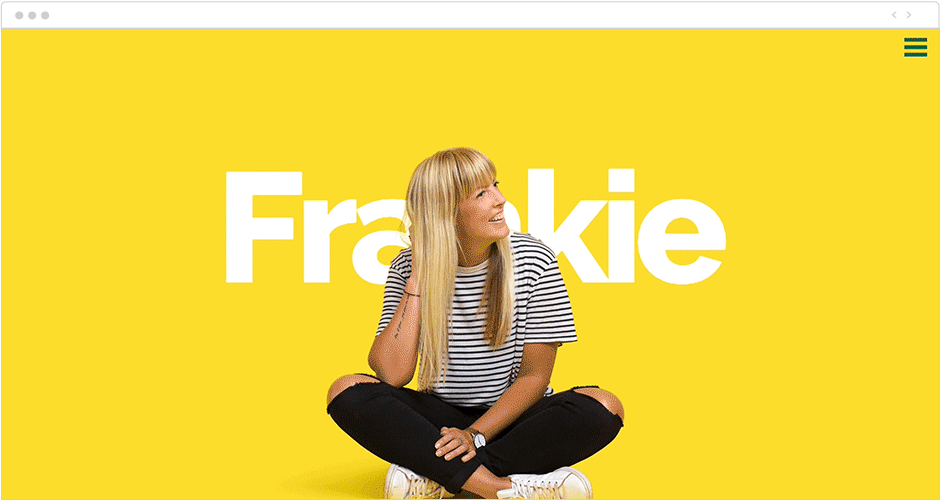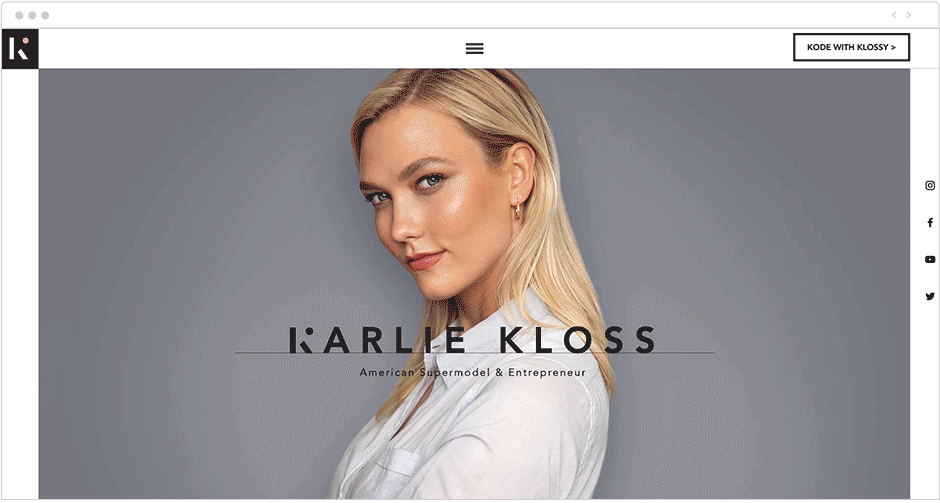What Is Influencer Marketing and How to Use It

One of the toughest things a small business can do is to get in front of the right audience without being immediately dismissed. The way people respond to ads is much different than it once was, making it harder for someone just getting started.
This is due to several factors: the number of ads shown, the now-expected marketing tricks, lacking in any sort of originality. Due to the number of ads shown and over-familiarity with marketing tricks, it's getting harder to catch consumers' attention - making it especially difficult for those just getting started in business. Well, if you’re struggling to get to your audience effectively or if you’re just trying to stay ahead of the curve, you may want to look into influencer marketing.
Influencer marketing is a collaboration between yourself and someone your audience follows on social media and respects their opinion. There’s actually much more to it than that, but we’re going to get you started with the basics and how to tackle this popular form of marketing below.
First, what (or who) is a marketing influencer?
That seems to be the question everyone is asking these days. While it can seem as though anyone who habitually snaps a pic and shares their Sunday brunch with a smiling face is an influencer, that’s simply not true. It’s also easy to assume that anyone with a large enough social media following is an influencer, but that’s not technically correct either, although it tends to come with the title.
A marketing influencer is a person who can effectively sway an individual’s purchasing decisions. Influencers are generally very knowledgeable and credible within a niche market and very actively engage with its members. Take makeup artist, Nikkie De Jager (@NIKKIETUTORIALS) for example. She shares valuable techniques and impressive works of her craft, garnering her the massive 12.4 million Instagram followers she has.
What makes these social media stars effective is that they have essentially built themselves into their own independent brand - one that feels genuine and relatable to their followers. So when they promote other brands, their followers are likely to trust their recommendations.
They’ve also put in the effort to learn and become an authority on a particular subject. It's that kind of expertise that launches them beyond just another traditional advertisement. Instead, they have built themselves into independent, identifiable brands of their own. They then use that platform to promote other brands that align with their values and outlook.
In a sense, they’re their own salesperson, and they need to be. The knowledge of a subject will just sit there unless you’re showing it to the world.

Types of influencers
Much like there are different markets to advertise to, there are different types of influencers to partner with, each with their own specialty and market.
Influencers can be celebrities, journalists and reporters, bloggers and vloggers and other types of content creators. Each type has their own audience and expertise, and the size and nature of each should be considered when finding an influencer to work with on a campaign.
If you’re just getting started with influencer marketing or are trying to get into a hyper-specific niche, you can look into micro-influencers. Unlike typical influencers, “micros” tend to be regular people that are knowledgeable about a topic that isn’t incredibly popular, but has its own dedicated following. They can be seen as more relatable than higher-profile influencers.
The number of followers needed to be categorized as a micro-influencer is wildly debatable. Some say less than 2,000 followers, some say a minimum of over 3,000, and others claim anywhere from 1,000-10,000 to 1,000-100,000 followers. Feel free to do a Google search. We’ll wait. Jokes aside, micro-influencers prove that you don’t need to hire a millionaire to effectively reach your audience.
Just know that when you go lower on the influencer spectrum, you’re aiming for a “regular person” speaking to “regular people” vibe for your campaign. When going higher up the pole, you’re more likely to work with industry experts, CEOs, and celebrities.
What is influencer marketing?
Now that you know what an influencer is and some of the types, it’s easier to define what influencer marketing actually is.
Influencer marketing is a collaborative campaign between an influencer and a brand. The influencer uses their reach to boost awareness about a brand or product to their following, which overlaps with the target audience of the sponsoring business. It’s great for audience building, lead generation, growing sales, engagement, and customer loyalty.
Influencer marketing campaigns are designed to reflect the style of both parties. The audience appeal of the campaign should go both ways. Both to followers of the influencer unfamiliar with the brand, and the follower of the brand who possibly isn't familiar with the influencer. That said, it’s the influencer and their audience reach that tends to pull the weight.
All in all, influencer marketing can help get the word out about your brand or product, with the help of a knowledgeable figure that has sway in your market Just like any other important tool for your business, influencer marketing is another way to speak to your target audience.

Influencer marketing statistics
If you’re still on the fence as to if you should give influencer marketing a chance, try these stats on for size.
Less is sometimes more: A study from Markedly shows that micro-influencers tend to get more engagement than celebrities.
The industry isn’t losing steam: Mediakix estimates the influencer marketing industry to reach $5-$10 billion dollars by the year 2020.
It’s marketer approved: Mediakix reports that 89% of marketers say that influencer marketing ROI is at least as good or better than other methods.
But finding the right fit is hard: According to Mediakix, 61% of marketers say that their number one challenge with influencer marketing is finding the best influencer for campaigns.
How to find influencers
With the last stat above in mind, it’s important that you take your time trying to find the right influencer for your campaign. You want to make sure your goals, audience, and expectations are aligned from beginning to end - but that’s for when you find the best influencer. How do you find an excellent partner in the first place? Try these sources:
Blogs and other online publications
If you’re looking for an expert on a subject, finding a writer or reporter within your industry is a good place to start. If you have someone in mind, be sure to do more research by reading content they’ve published.
Social media
This should be a relatively obvious one. Even if you’re not specifically seeking a social media influencer, there’s still a large chance that your candidate has a social media following to some extent. This can allow you to see how they interact with their followers.
A great resource for finding an influencer on social media is your own audience. Keep tabs on accounts that are continually mentioned and tagged in posts or have their posts shared often.
Still searching for an influencer on social media? Well, did you use the search? It’s your friend and you should find both relevant content and people by searching for your industry keywords and hashtags.
Search engines
Speaking of search, did you try Google? It may sound silly, but doing a search for an influencer, especially with your market in the search box (e.g. ‘your business industry’ + ‘influencer’) could yield some favorable results. Even if it leads you to one of the other tools to help find an influencer, it’s hard to go wrong with the world’s most popular search engine. Of course, you’ll also need to do additional research on your influencer if you get a hit to make sure they’re aligned with your values and are a good overall fit.
Online influencer software
With the growth of influencer marketing steadily rising, it’s not surprising to find there are specialized services for finding influencers. One of the most popular sites around for this is BuzzSumo. It allows you to find influencers by topic or location, and then analyze them by reach authority, influence, and engagement.
Influencer marketing firms
If you have the budget and don’t have the time, hiring an agency is another route you can take. While you may not learn as much about the process as you would if you did it yourself, agencies like Obviously can help you meet your goals. From identifying influencers to managing your networks and devising a complete social strategy, you’ll be taken care of.
Influencer marketing examples
H&M
H&M is one of the most well-known fashion brands in the world. Its global reach also helps explain its massive reach on social networks, like its over 31 million followers on Instagram. There’s a reason why: A quick look at the official @hm Instagram account will also show you a very well put together showcase. The brand is also very familiar with influencer marketing. Campaigns have included @laura_tobon, @sincerelyjules, and @elavelden
Wix
Here at Wix, we’ve been lucky to partner up with several amazing people. From Karlie Kloss to Rhett and Link from Good Mythical Morning, we’re more than a little proud.
Lyft
Lyft, a popular ride-sharing service, has partnered with several celebrities in a series of YouTube videos called “Undercover Lyft.” The premise of the series is simple: A celebrity disguises themselves as a Lyft driver and reveal themselves at the end of the ride. There’s a decent assortment of videos that have been produced, including ones featuring Shaq, Olivia Wilde, Jason Sudeikis, and Danica Patrick, just to name a few.
By Blake Stimac
Wix Blog Writer







